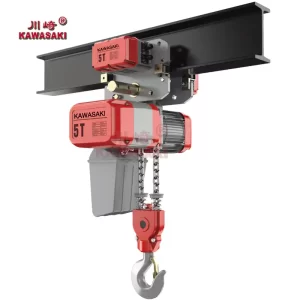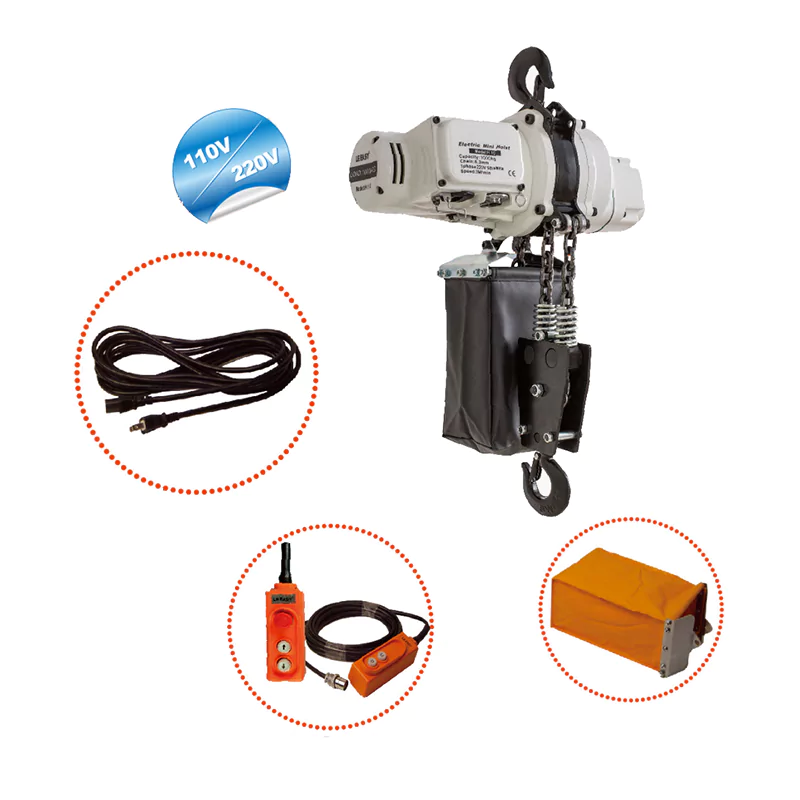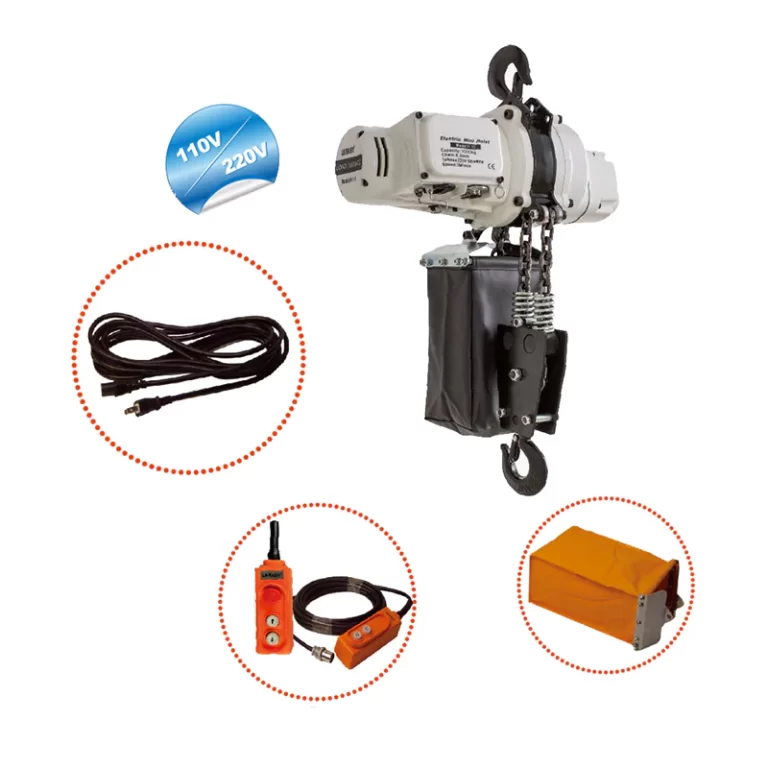Choosing between electric hoists and EOT cranes comes down to your project requirements and how the cranes are going to be used. They are more appropriate for industrial settings where high capacity and broad coverage are required. By assessing the load capacity, workspace size, and operational requirements, you will ascertain which is best for your application.
Understanding Electric Hoists and EOT Cranes
If you are reading about how to choose the right lifting equipment for your project, you are probably faced with the decision to choose between an electric hoist and an EOT crane. While both are used for lifting and transporting heavy loads, there the similarities end and they each offer different features, benefits and applications.
Key Features of EOT Cranes
EOT cranes are one of the most commonly used cranes in industries. They are ideal for heavy-duty operations due to their high load-bearing ability. One is a gantry crane, which has its transport arrangement and is mainly used in shops and construction sites where heavy items are handled. Their overhead structure allows them to cover larger areas — giving the robot ample opportunity for movement throughout the workspace.
Key Features of Electric Hoists
Electric hoists, however, have their distinct advantages that can meet a variety of different operational needs. A prominent aspect of theirs is mobility and flexibility. Unlike EOT cranes which need to be installed on a fixed location, an electric hoist can be moved and adjusted to a particular task. These are especially helpful in areas where space is a little tight or areas where you routinely have to reorganize.
Comparing Applications and Suitability
Understanding where each system excels will guide you in choosing the right equipment for your needs.
Typical Use Cases for EOT Cranes
In cases where high load capacity is of utmost importance, EOT cranes are fully suited to the task. These are common in big plants, shipbuilding yards, and building sites where heavy weights should be transported over long ranges.
Typical Use Cases for Electric Hoists
Electric hoists, on the other hand, are frequently utilized on industrial and manufacturing sites, where people perform repetitive lifts of light to moderate loads. They are ideal for assembly lines or warehouses where you need fast and reliable lifting, thanks to their cost-effectiveness and efficiency.
Industrial and Manufacturing Environments
In these settings, electric hoists contribute significantly to productivity by reducing manual labor and speeding up operations. Their compact size allows them to be integrated into existing systems without major modifications.
Construction and Maintenance Tasks
Electric hoists also play a vital role in construction sites for lifting tools or materials to elevated areas. Their portability ensures they can be easily transported between job sites as needed.
Evaluating the Advantages of Each System
When evaluating which system might best suit your project needs, consider the inherent advantages each offers.
Benefits of Using Electric Hoists
The primary benefits of electric hoists include their cost-effectiveness, as they generally require less investment than large crane systems. Additionally, their ease of installation means reduced downtime during setup or maintenance periods.

Cost-Effectiveness and Efficiency
Electric hoists provide an effective balancing solution without losing performance, making them a good option for improving the balance in your corporate budget with the right balance between maintaining daily business operations and operating expenses. Electric hoists are a cost-effective offering without toning down the performance, making them favorable as businesses intend to stretch their budget plans while getting back to speed in doing things.
Ease of Installation and Maintenance
Their straightforward design facilitates quick installations and minimal maintenance requirements, allowing businesses to focus on core activities rather than equipment upkeep.
To learn more about utilizing these tools for your specific application needs, visit APOLLO‘s website for customizable solutions for any potential or existing industry.
Benefits of Using EOT Cranes
For projects demanding substantial weight handling capabilities, EOT cranes offer unmatched advantages such as enhanced safety features that ensure secure operation even under challenging conditions.
High Load Capacity and Durability
With their robust construction, EOT cranes are built to withstand rigorous use over time while maintaining high-performance levels across various industrial applications.
Enhanced Safety Features
Naturally, safety plays a significant role when dealing with heavy loads for this reason. EOT cranes come with advanced safety mechanisms to ensure operator safety and materials during operations as well.
Factors to Consider When Choosing Between Electric Hoists and EOT Cranes
Project Size and Scope Considerations
The size of your project is the main consideration when choosing between electric hoists and EOT cranes. Electric hoists are suited for smaller projects or areas with less overhead. Because of their compact design and how easy they are to install, they’re ideal if you need to set up quickly and move often. On the other hand, EOT cranes are more appropriate for large-scale industrial use that involves transporting heavy loads over wide open spaces. These overhead structures enable them to cover a lot of ground when it comes to workspace and make them almost necessary for facilities such as shipyards or large manufacturing plants.
Specific Load Requirements
It is important to know the load requirements. Electric hoists have a great diversity of load-handling applications with moderate weight, the capacities are impressive too, depending on the type of hoist. They are ideal for repetitive lifting activities in manufacturing or assembly lines. Meanwhile, the design of EOT cranes allows them to work with very heavy loads, since they are manufactured in a robust shape with an extremely high load capacity.
Recommendations for Selecting the Right Equipment with APOLLO Products
Overview of APOLLO’s Electric Hoist Solutions
What makes APOLLO’s products unique is that they are manufactured to high-quality standards, so they are reliable and efficient in all applications. It can be customized according to customers: function customization, appearance customization, material customization, voltage customization, surface treatment customization, and packaging customization.
Matching APOLLO Products to Project Needs
Match your project needs with the capabilities of its products. If you need something that can move around with you, you can also have its electric chain hoists, which can be easily set up, maintained, or repaired and still have large lifting capacities. These types of hoists are well suited when the working area is limited or there is a need for constant movement.
For larger projects demanding higher load capacities, its electric wire rope hoists provide robust solutions with enhanced safety features. They are engineered to handle rigorous use over time while maintaining high-performance levels.
Its manual hoists also address cases where you want or need to go manual due to the particularities of your project. Such products are made with 360° operation, stage upside-down hoist functions, load-limiting and many more functionalities.
Once you assess the overall size, scale and load specifications of your project and match that with APOLLO’s varied product offerings, then you can choose a solution to keep your operations efficient and safe.
FAQs
Q1: When I want to choose between an electric hoist or an EOT crane, what should I keep in mind?
A: Project scale, specific load requirements, workspace, mobility, budget, installation complexity, and your long-term maintenance plans.
Q2: Are electric hoists for outside use?
A: Yes, all models have some sort of weather resistance, whether they’re dust-proofed or rain-proofed designed for outdoor use.
Q3: Can I have my lifting equipment made to order?
A: Absolutely! Customizations such as explosion-proof or visual customizations like changing color to meet operational requirements or brand needs.


